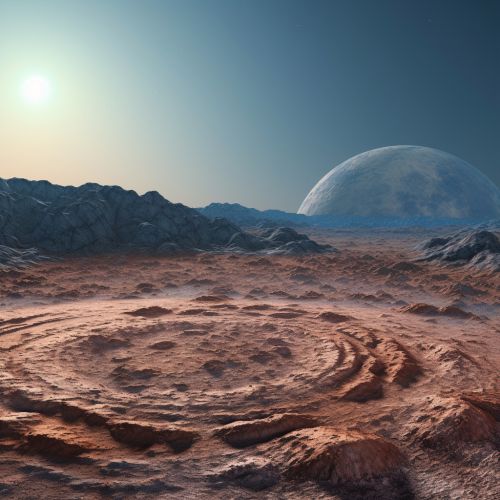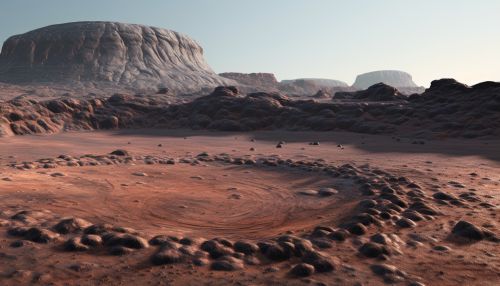Crater
Introduction
A crater is a circular or oval-shaped depression in the surface of a planetary body or other solid object in the solar system, typically caused by the high-velocity impact of a meteoroid, comet, or asteroid. Craters can also be formed by volcanic activity, subsidence, or other geological processes.


Formation
Craters are formed when a meteoroid, comet, or asteroid collides with the surface of a planet or other solid body at high speed. This impact generates a shock wave that propagates through the object and the surface material, causing a large amount of material to be ejected and leaving a depression known as an impact crater. The size and shape of the crater depend on the size, velocity, and angle of the impacting body, as well as the properties of the surface material.
Classification
Craters can be classified based on their morphology, size, and the process of formation. The two main types of craters are impact craters and volcanic craters. Impact craters are formed by the collision of a meteoroid, comet, or asteroid with the surface, while volcanic craters are formed by volcanic activity. Craters can also be classified based on their size. For example, small craters are typically simple bowl-shaped depressions, while larger craters may have a central peak or ring of peaks caused by the rebound of the crater floor following the impact.
Impact Craters
Impact craters are the most common type of crater in the solar system. They are found on almost all solid bodies, including Earth, the moon, Mars, and the moons of Jupiter and Saturn. Impact craters are typically circular or oval in shape, with a raised rim and a central depression. The size and shape of the crater depend on the size, velocity, and angle of the impacting body, as well as the properties of the surface material.
Volcanic Craters
Volcanic craters, also known as calderas, are formed by volcanic activity. They are typically circular or oval in shape and are often located at the summit of a volcano. Volcanic craters can be formed by the collapse of the summit of a volcano following an eruption, by the explosion of a magma chamber, or by the slow subsidence of the ground above a magma chamber.
Crater Studies
The study of craters, known as cratering science, is a key aspect of planetary science. Cratering science involves the study of the formation, morphology, and distribution of craters, as well as the use of craters to understand the history and evolution of planetary bodies. Craters can provide valuable information about the age and composition of the surface material, the presence of water or ice, and the past and present geological activity.
